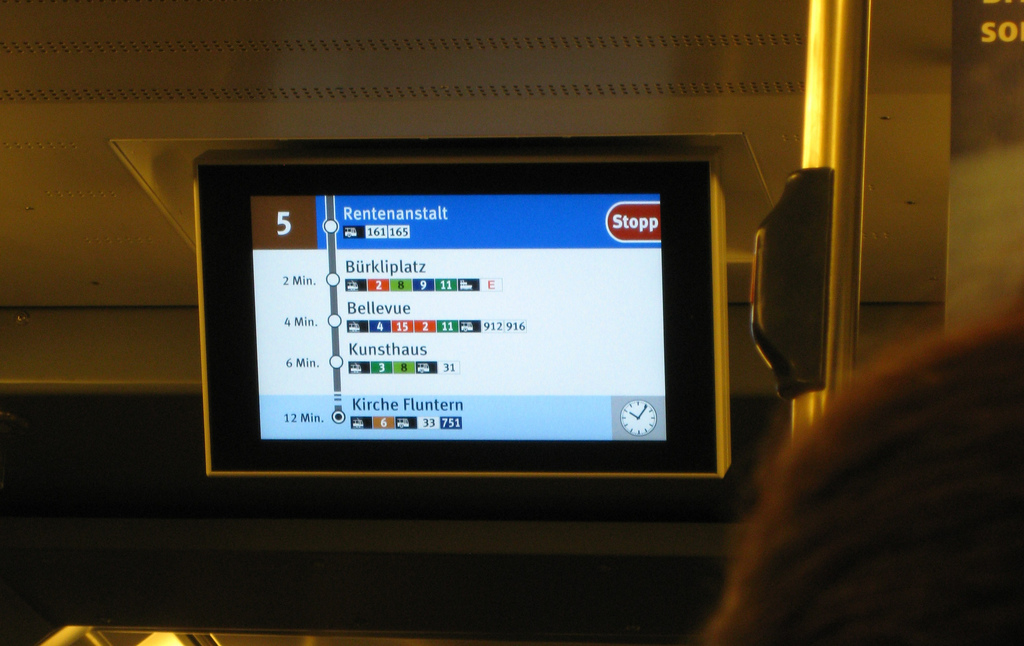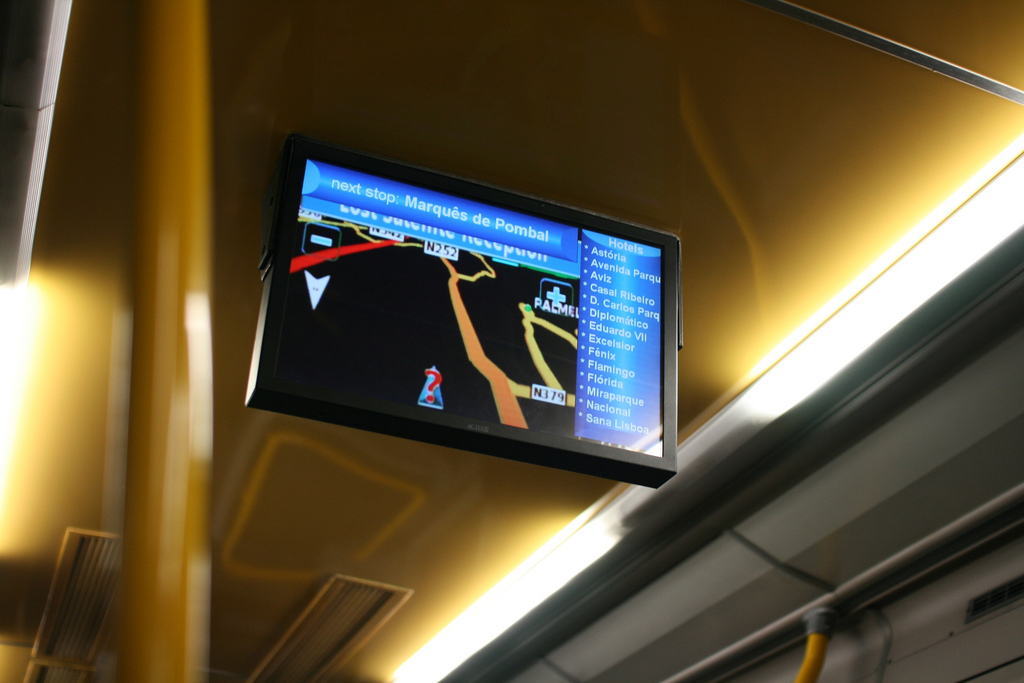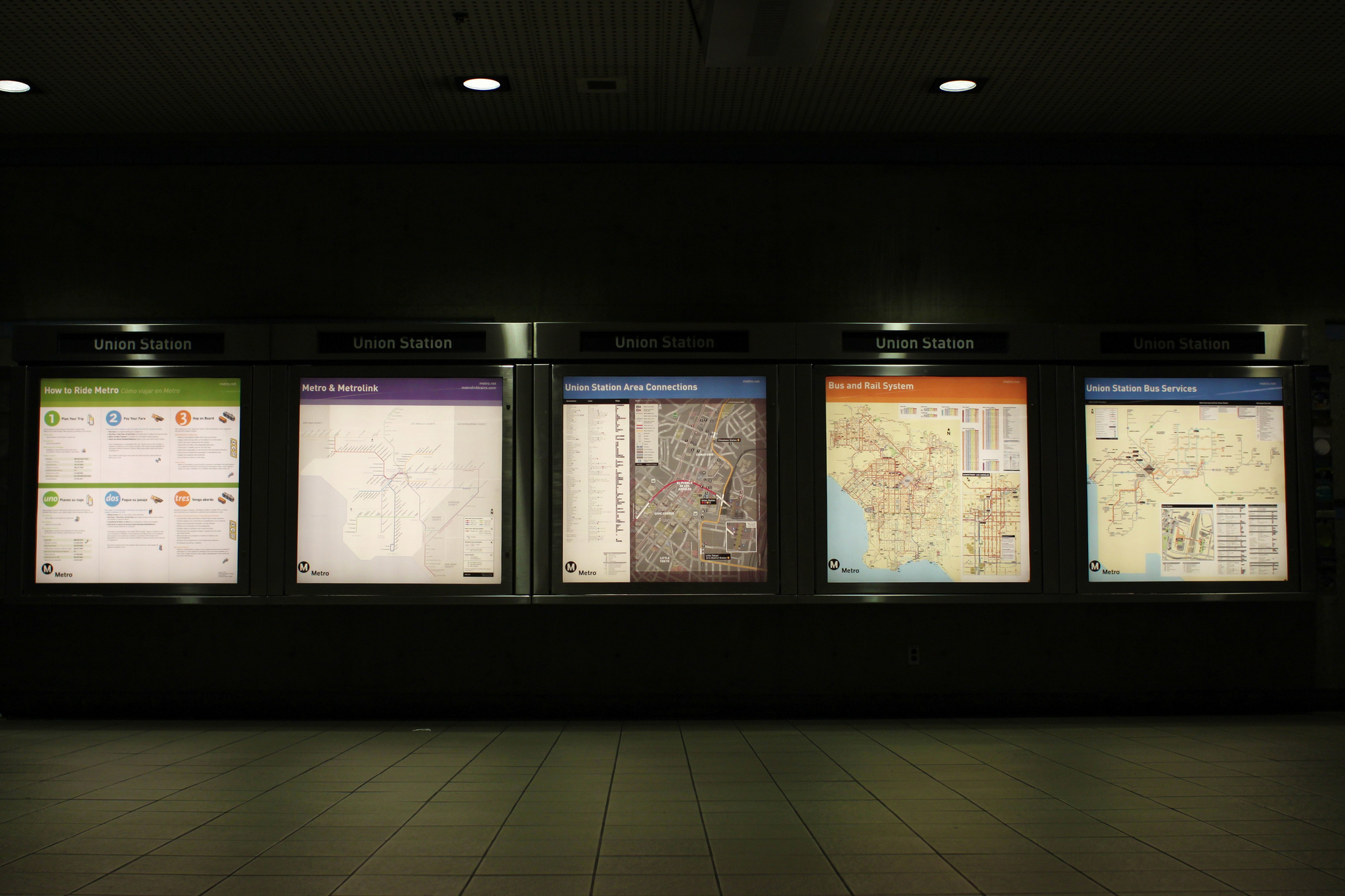I have a terrible sense of orientation. Perhaps skipping geography class to grab coffee might have contributed to that but in my defense the coffee was very good!
Why am I telling you this?
You see people like me have a tendency to get lost easily. Directions are a lifesaver for us and digital signage can provide a great platform for them. If the digital signage is set up well it can be extremely useful to the passenger in more ways than one.
Let’s summarize why digital signage is necessary in public transportation!
Reason #1: Accurate information delivery
In my experience, the fact that a bus is late is not what truly bothers people unless they are in a hurry. Inaccurate information does.
With digital signage and some wireless magic, arrival times can be easily updated to minimize the mentioned bother. Digital signage can be implemented in buses, subways, trams, all kinds of rail transportation, or even in taxis.
Digital signage is making smart transportation even smarter by obliterating the need for paper signs and delayed delivery of updates.
Although sophisticated digital screens have been primarily used for bus stations and airports, today they also make every-day travelling more comfortable and you’re just as likely to find digital signage in a local bus.
Reason #2: Displaying more information than ever
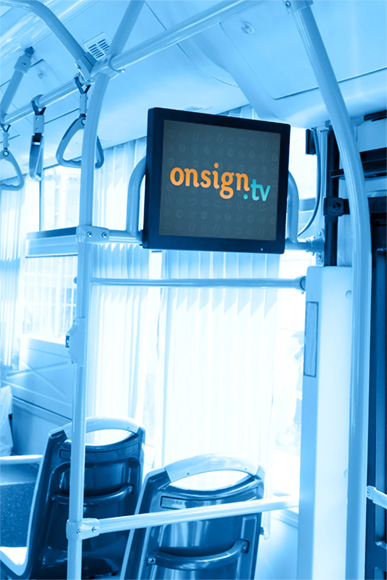
With a digital display you can share information faster, with more accuracy, and a definitely vaster amount you ever could with an announcement board.
Digital signage is a excellent wayfinding tool, an important feature that can be used in vehicles, stations and waiting areas:
- Arrival times
- Emergencies
- Delays or cancellations
- Traveling guides
- Entertainment.
Arrival times can be updated easily and accurately to a digital screen at the station to alleviate the tension of waiting. Delays can be caused by traffic or any other factor that cannot be predicted. With digital signage they can easily be taken into account for the time of arrival.
Emergencies, delays or cancellations are also unpredictable, however it is a lot easier to update passengers about such matters. Lack of awareness about a situation can cause people to become upset. This way it’s easy to keep them up to speed on what is going on and avoid any harsh reactions or panic attacks. Then again, in most cases these happen only in movies.
Speaking of movies, it’s important to point out that entertainment has always been a valid excuse to find itself on a list about reasons or benefits for digital screens. On trips of a greater distance, a good film can be quite a treat for passengers.
Digital signage can show the entire network to the passenger. Quite an interesting use of interactive digital signage can be seen at bus shelters in Seoul, South Korea. As they wait, passengers can examine current information about traffic and transit routes, or even in some cases play games to relieve the boredom! Quite a versatile use of a digital screen, wouldn’t you say?
Reason #3: GPS digital signage
The Global Positioning System (GPS) can be combined with digital signage to provide a real time image of the current location of the vehicle you’re interested in.
While it was originally intended for the military, in the 1980’s GPS has become available for civilian use. I mean, if people use it for apps, why not use it in more useful ways?
GPS can be quite an interesting feature with digital signage and it can be a true lifesaver for passengers who are new to the area and are still trying to navigate in it.
GPS can be integrated with digital signage to display specific content depending on location. For example certain ads or local information can be shown based on the location of the vehicle.
Travel guides can be programmed to display content about any important landmark or event that may be taking place nearby. Although I’d suggest occasionally looking out the window as well. The Eiffel Tower isn’t that difficult to spot!
Reason #4: Optimize the travelling experience
All the aforementioned factors add up to provide the best travelling experience for the customer. Easy and fast access to the right information is vital, but with digital signage it can also be quite interesting, especially if the displays are interactive.
Interactive digital displays can provide all the necessary information to travelers, but they aren’t limited to busses and trains. Digital signage in taxi’s has been present for quite some time, and in this setting the interactive display truly found a use, despite being primarily used for making payments.
More and more companies are reaching out to their consumers through the technology they already have like smartphones or tablets. This is the main reason a great number of screens are being unplugged, leaving the payment process to tablets and smartphones.
Reason #5: Easier Wayfinding
General mapping is a great use for digital signage, even if it is outside a bus or a train. Displays can be set up at stations or virtually any location where a map is necessary. An interactive display is the perfect solution in the case where the user can examine certain features of the portrayed map.
Here’s a video for you to see just how awesome digital signage can be if it’s properly used.
In other news: San Francisco Bay Area Rapid Transit District (BART) metro car includes a series of digital displays, both internal and external, to provide passengers with information. It has several other fascinating features that may prove interesting for you to read. It appears as all standards rise with the passing of time, digital signage, too, is becoming quite an important element of public transportation.
Reason #6: It’s not all about the trip!
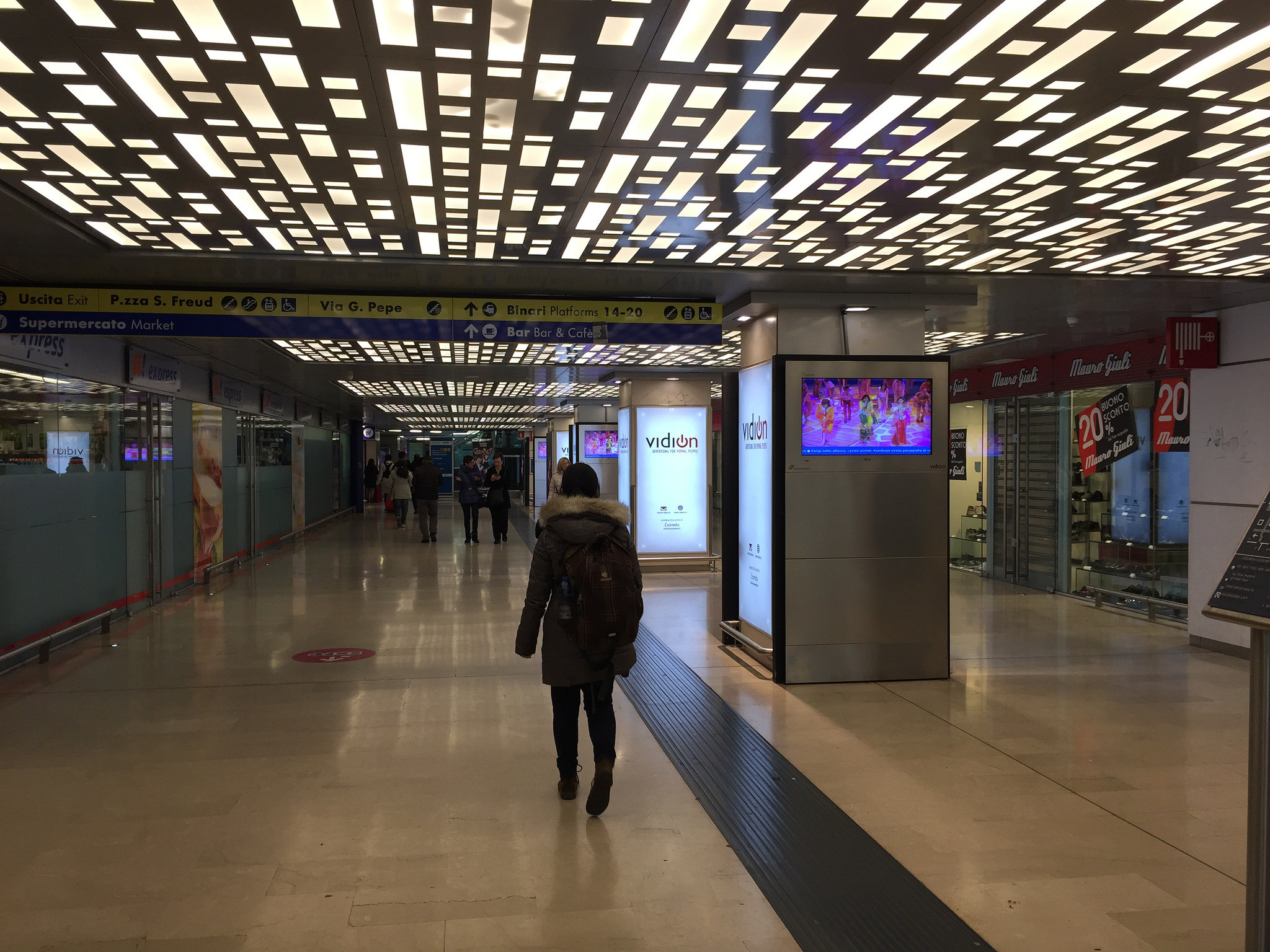
In all branches of digital signage, the customer experience and the entertainment factor always manage to find themselves on the list of important uses for this technology.
Just like in universities, restaurants or hotels, the customer experience is very important in public transportation. A good movie in a longer bus ride or TV, video and social media on displays at bus stops can be great for the average passenger.
At times people may spend a great amount of time at an airport, waiting for a flight that’s delayed or because they arrived early. As you can only spend so much time in the typical duty free shops, a drop of entertainment to pass time is greatly welcomed in these instances. There are several distinguished uses for airport digital signage, uses which may also apply to other stations of public transportation.
The passenger’s view is very important!
Let’s have a look! In these blue letters lies a blog page with very detailed data about how the passenger perceives the digital signage used in public transportation. Every inch of a display matters!
The perspective can be quite useful and provides an easier understanding on how digital signage can be utilized effectively.
Despite being a frequent passenger, in a larger city with a more complex line of travel one always finds a need for directions. Digital signage can be a great provider for both the commoner and the tourist!
Images by moppet65535, Nicolas Nova, Oran Viriyincy.
Also, check our Album for images.


